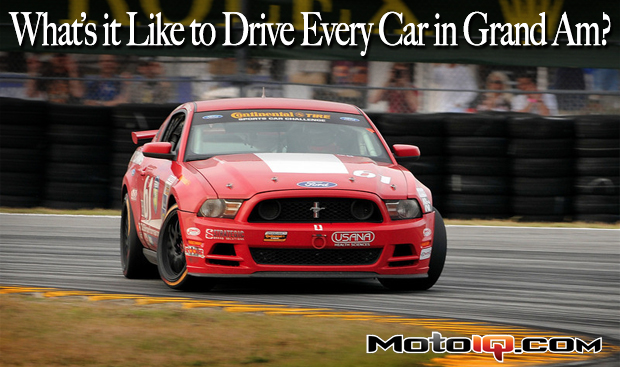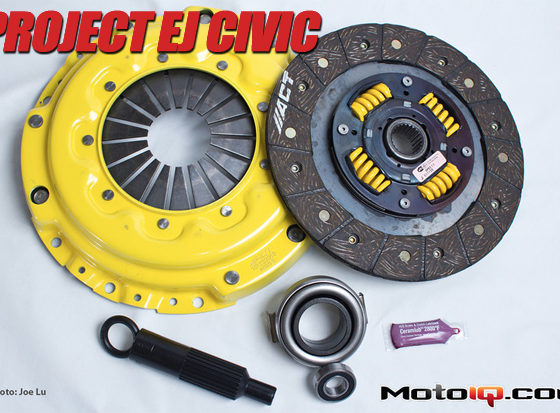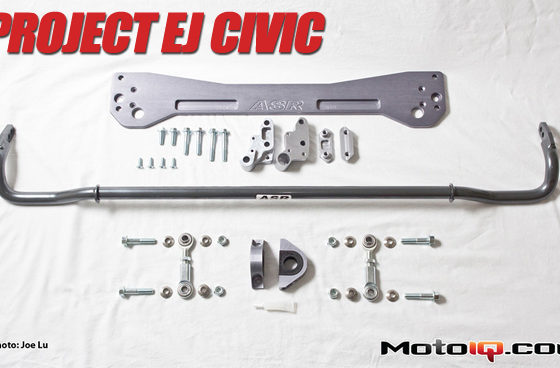,
 |
| Billy Johnson celebrating a win at Daytona with a little drifting exhibition in the #61 ROUSH Performance Ford Mustang BOSS 302R. These “GS” cars have a lot of horsepower but a lot of weight. Photo courtesy of J.D.S. Photos |
Gran-Sport “GS”:
The faster of the two CTSCC series of cars consists of mostly V8 cars, Porsche Flat-6s, supercharged V6 Audi, Turbo flat-4 Subaru STI which produce ~350-500hp. These cars vary from 2,700-3,300lbs without driver and with full fuel and driver can weigh 3,500lbs like a NASCAR Nationwide or Cup car. Most of which uses 275/35-18” Continental slicks while some use a 245 front tire. Needless to say, for the most part these cars are under-tired for their weight. The most popular brands are the Ford Mustang BOSS 302R, BMW M3, Chevrolet Camaro, Aston Martin Vantage, Porsche Cayman S & 911, and even an Audi S4 and Subaru STI. I’ve had most of my career wins in this class in a Porsche 911 and Ford Mustang, while also driving the only BMW Z4 M-coupe to race professionally in North America.
More modifications are allowed in GS, from upgrading the brakes to 4-piston front calipers and 13-15” 2-piece brake rotors, to series-allowed wings and spoilers. With the same 3.5” minimum ride height and no suspension geometry changes (like ST, only series-mandated Koni or AST coilovers and bushing changes are allowed), GS cars are heavy, under-tired, and FAST. Reportedly over 170mph fast in the draft at Daytona. I would compare these cars to most of the Modified-class time attackers. Probably those who focus primarily on power modifications while leaving most of the interior stock. If I had to guess, GS cars would do 1:52-1:55s at Buttonwillow.
 |
| The start of the 2012 BMW Performance 200 at Daytona. An all ROUSH front row with the 2012 and 2013 Ford BOSS 302R Mustangs side-by-side. Behind you can see other series populars including the E90 BMW M3, Chevrolet Camaro, Subaru STI, and newcomer Aston Martin Vantage. |
This class is a very peculiar class in motorsports world-wide. With driver and fuel, these cars can weigh up to 3,500lbs –the same as a NASCAR Cup or Nationwide car! But with minimal downforce and much smaller tires, it’s still amazing how close the lap times GS cars can turn to a GT car while weighing over 800lbs more than a GT car. With stock ABS, brake boosters and Traction Control (no team that I’m aware of uses the stock TC and choose to turn it off), these are still basically heavy street cars with a cage in them going VERY fast on small tires. There probably isn’t a racecar in Europe that weighs more than 2,800lbs but the GS car probably has more in common in terms of feel to a NASCAR or a Australian V8 Supercar than you might believe.
I am still surprised how heavy cars are becoming from the factory, yet how well they handle. If you’ve ever driven a new Ford Mustang GT 5.0, a BMW M3, Mitsubishi EVO X, or a Nissan GTR, they somehow seem to defy physics and their weight and handle very well. Throw on coilovers, R-compound tires, a few power mods, a small wing, remove the rear seats, and you have a GS car. The big difference is for a top level GS race team, swaybar and spring rates are refined to 25lb increments and reading the tires. Those time attackers and race teams taking 200lb spring rate swings at it don’t understand their car to professional competitive levels.
 |
| Billy Johnson in the #18 BMW Z4 M-Coupe at Mosport. Many Grand-Am races have been held north of the border also including Montreal and Trois Rivieres in Quebec. Photo courtesy of Wes Duenkel Motorsport Photography |
The racing in GS is equally as close as ST. The main focus is tire conservation and pit strategy with tires. Because the cars are so heavy and the tires are so small, those who abuse the tires to be fast early on won’t always be there at the end. Due to the huge range in driver talent, cars with great-braking low power racing heavier, worse braking high powered V8s to all-wheel-drive forced induction cars, I don’t think there is a more diverse series of platforms in motorsports that are this close together in speed. I applaud the Grand-Am officials for their daunting task of trying to make all of these unique cars competitive with one-another. While they can’t make everyone happy and have an impossible job at hand, they do an impressive job even if I or others don’t always agree.
The Mustangs and BMWs can do nice power-oversteer slides and while it may not hurt outright speed for one lap, you will kill your tires and not be around at the end. Porsches are easy on tires and good on brakes due to their light weight but you have to roll the mid-corner speed and pass under braking. The AWD cars are great coming out of low speed corners, but I think they abuse their tires and are always sliding them and thus are not often around at the end. Everything is a balance and it’s neat to watch the races and see who uses the inherent strengths of the car and succeed and those who seem to focus on their weaknesses and don’t go anywhere.
Often those who track a similarly modified steet car are bitten by the track bug and their daily driver becomes much more modified than a GS car, or they are a beginner who does not want to compromise the daily driving comfort for speed. It’s an interesting phase for track guy and I see prime examples in Mustangs, M3s, 335is, EVOs, and GTRs.



